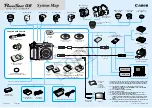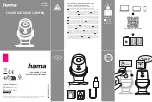
V1.02
Thom Hogan’s Complete Guide to the Nikon D300
Page 254
because they can isolate individual bright and dark objects to
help make critical exposure decisions.
Nikon claims that Spot metering targets a tight 3mm area
(approximately 2% of the frame). The spot area is always
centered on one of the autofocus sensors. I question this
claim, however. In practice I see “exposure pollution” with
point sources of light over a far greater area than 2% on my
D300 bodies (and usually a bit more elliptical in nature than
circular). The spot pattern on the D300 is nowhere near as
tight as it is on some earlier Nikon bodies I’ve used.
The spot metering point follows the autofocus sensor being
used. Most photographers use the outer edges of the
autofocus brackets to envision the circle of what’s being
metered. This sometimes gets them into trouble. The actual
area is at least 50% larger than the brackets in size, and a
slightly different shape (see illustration, below).
Spot metering occurs centered on
one of the autofocus sensor areas
(green). Note the area metered is
somewhat larger than the autofocus
sensor brackets indicate
.
A couple of spot metering nuances can catch some users by
surprise (and confuse others). The D300’s spot meter uses the
currently selected autofocus sensor. But “currently selected”
doesn’t necessarily mean the autofocus sensor
you
selected.
In Dynamic Area with Continuous Servo autofocus, the D300
tries to follow subjects that move beyond the autofocus area
you select, and will use different sensors for the focus, and
thus, the spot metering.
The D300 uses the autofocus sensor you select via the
Direction pad as the initial sensor in Dynamic Area autofocus
















































